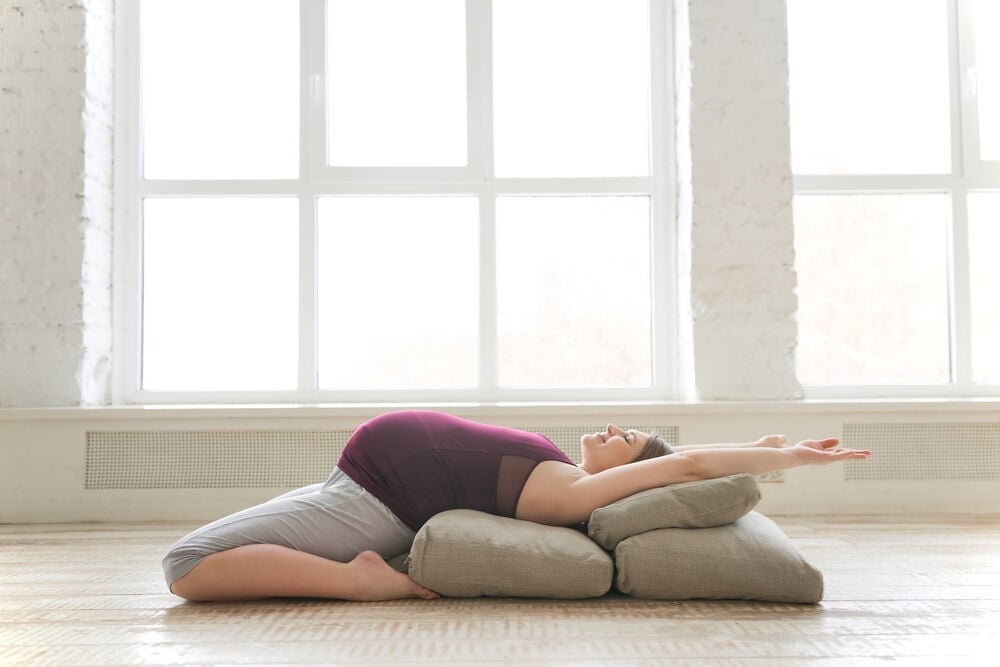There seems to be no end to the symptoms and conditions that can arise during pregnancy. Carpal tunnel syndrome (CTS) is just another potential medical condition you can add to the mixed bag. If you’re pregnant and experiencing numbness, tingling, and pain in your hands, you’re in good company.
-
Tracking cycle
-
Getting pregnant
-
Pregnancy
-
Help Center
-
Flo for Partners
-
Anonymous Mode
-
Flo app reviews
-
Flo Premium New
-
Secret Chats New
-
Symptom Checker New
-
Your cycle
-
Health 360°
-
Getting pregnant
-
Pregnancy
-
Being a mom
-
LGBTQ+
-
Quizzes
-
Ovulation calculator
-
hCG calculator
-
Pregnancy test calculator
-
Menstrual cycle calculator
-
Period calculator
-
Implantation calculator
-
Pregnancy weeks to months calculator
-
Pregnancy due date calculator
-
IVF and FET due date calculator
-
Due date calculator by ultrasound
-
Medical Affairs
-
Science & Research
-
Pass It On Project New
-
Privacy Portal
-
Press Center
-
Flo Accuracy
-
Careers
-
Contact Us
Pregnancy Induced Carpal Tunnel Syndrome: How to Deal with It


Every piece of content at Flo Health adheres to the highest editorial standards for language, style, and medical accuracy. To learn what we do to deliver the best health and lifestyle insights to you, check out our content review principles.
What is carpal tunnel syndrome?
The carpal tunnel is quite literally a tunnel — a packed fibro-osseous tunnel — located on the palm side of the wrist. Normal pressures in this tunnel are 20-30 mmHg. The median nerve, which runs down the length of your arm, passes through the carpal tunnel to your palm side. The median nerve is responsible for controlling sensation and movement in the thumb and first three fingers.
When the median nerve becomes chronically compressed, this first will result in demyelination and eventually in axonal death, which will lead to tingling, numbness, and pain in the thumb, index, middle, and ring fingers. This is carpal tunnel syndrome.
What causes carpal tunnel syndrome?
Carpal tunnel syndrome occurs when there is swelling or a buildup of fluid in the wrist. It is often associated with professions that require repetitive movement of the wrist, or strong grips, such as computer workers, mechanics, assembly line workers, musicians, painters, and gardeners.
Since swelling and water retention are incredibly common during pregnancy, so are conditions like carpal tunnel syndrome, may occur as a result of swelling.
What does carpal tunnel syndrome feel like?
Not sure whether the symptoms you’re experiencing are due to CTS? These are the most common signs and symptoms of CTS, experienced in most cases from week 30 and on of pregnancy.
- Tingling or numbness in part of the hand (thumb, index, middle, and ring fingers)
- Throbbing or burning sensation in the hands, wrists, and fingers
- Stiffness or cramping of hands, especially in the morning
- Thumb weakness
- Trouble gripping objects or performing tasks such as opening jars or buttoning a shirt.
CTS is usually worse in your dominant hand, and in more than half of pregnancy carpal tunnel syndrome cases, it occurs in both hands.

Some women are more likely to develop CTS during pregnancy than others. They include:
- Women who were overweight or obese before pregnancy
- Women carrying multiples
- Women with gestational diabetes or gestational hypertension
- Women who have experienced CTS in past pregnancies.
While carpal tunnel syndrome may cause a lot of discomfort, it is usually not a serious condition. In most cases, it resolves within 3 months after birth once swelling has subsided and hormone levels have returned to normal.
How to relieve carpal tunnel pain during pregnancy
Between carpal tunnel syndrome and pregnancy in general, it can be difficult to get a good night's sleep. Normal daily tasks will suddenly seem impossible to accomplish due to the exhaustion, discomfort, and pain you’re experiencing.
We’re right there with you, mama-to-be! Here are a few things you can do that are safe during pregnancy for carpal tunnel relief.
Reduce your sodium intake
If you’re looking to reduce swelling in the body, the first place to start is by reducing your intake of salt. Sodium is quickly absorbed by cells, and it draws water in with it, causing water retention.
Cut down on the amount of salt you eat and increase your water intake and you’ll probably see a big difference quickly.
Wear a splint while you sleep and during the day if possible
While you sleep, you may not notice how your hands fold, flop, or get twisted into awkward positions until you wake up in pain. A splint will help to keep your hand in a neutral position so that you don’t end up putting pressure on your carpal tunnel.
Avoid repetitive motions
Find new ways to perform daily tasks that require repetitive motions by using your forearms or body weight to put power behind a movement, instead of using just your wrist. If your job requires a lot of typing, consider dictating instead.
Practice good posture
Your changing body can cause you to unknowingly sit, stand, and move in unnatural and awkward ways. Make sure that your neck and shoulders are not curved, causing added pressure on the median nerve.
Take a quiz
Find out what you can do with our Health Assistant

Treatments for pregnancy carpal tunnel syndrome
These tried and true CTS treatments can help to ward away and keep away symptoms of pregnancy carpel tunnel.
- Massage
You can perform massage on yourself, have your partner help you, or visit a professional massage therapist for pregnancy carpal tunnel relief.
Start from the inner fold of your elbow and work your way down toward your wrist. Use your thumb and apply firm pressure, moving in a circular motion all around your wrist, then work your way back up your arm again.
- Exercise and stretching
Stretches are a great way to relieve CTS pain. Do them once an hour, especially if you have a profession that requires you to do repetitive motions or sustained positions with your hands.
Warm up. Make a firm fist with your hand, then stretch out your fingers as far apart as you can. Hold for 5 seconds and repeat 4 times.
Prayer stretch. Start with your palms together right in front of your chest. Lower your hands, keeping them together until you begin to feel a stretch. Hold the position for 20 seconds and repeat 3 times.
Traffic stop stretch. Hold your arm straight out in front of you with your palm facing out as if you were stopping traffic. Using your other hand, pull back on your fingers as if trying to bend them back toward your forearm. Hold for 15 seconds and repeat 3 times.
- Physical therapy
If your CTS is affecting your daily functioning, it may be time to seek help from a doctor or physical therapist. A physical therapist will assess you, show you stretches and exercises to do, and will make sure that you’re doing them right.
Conservative treatment can include corticosteroid injection of the carpal syndrome. Surgical release of the carpal tunnel is a widely accepted treatment, particularly for fixed sensory loss, thenar weakness, or intolerable symptoms with no improvement after splinting and /or glucocorticoids.
- Pain relievers
Avoid ibuprofen, as it has been linked to severe pregnancy complications. If you have any concerns or questions about what medications are safe to take during pregnancy, consult your doctor.
Carpal tunnel syndrome and breastfeeding
Breastfeeding is way more physically demanding than it looks. Most breastfeeding moms experience neck, shoulder, and back pain, and with carpal tunnel syndrome, it can get even worse.
Instead of holding your baby with your hands, experiment with different positions and prop your baby up using nursing pillows, couch pillows, and blankets and pillows to support yourself as well.
Try switching up how you position and hold your baby each time you breastfeed to avoid repeated and sustained postures that could put pressure on your wrist. Try nursing lying down with baby facing you.
If you’re really struggling, make an appointment with a lactation consultant. She can help you find positions that work for both you and your baby.
Takeaways
Carpal tunnel syndrome can be anything from mildly annoying to severely painful. To keep swelling down during pregnancy, eat a healthy diet with plenty of fruits and vegetables, whole grains, fatty fish, and low-fat dairy products. Avoid eating too much sodium, which can increase swelling and inflammation. Regular exercise and stretching are excellent ways to keep chronic pain and discomfort at bay.
If you are experiencing severe pain, visit your doctor as soon as possible.


Hey, I'm Anique
I started using Flo app to track my period and ovulation because we wanted to have a baby.


The Flo app helped me learn about my body and spot ovulation signs during our conception journey.


I vividly
remember the day
that we switched
Flo into
Pregnancy Mode — it was
such a special
moment.
Real stories, real results
Learn how the Flo app became an amazing cheerleader for us on our conception journey.




